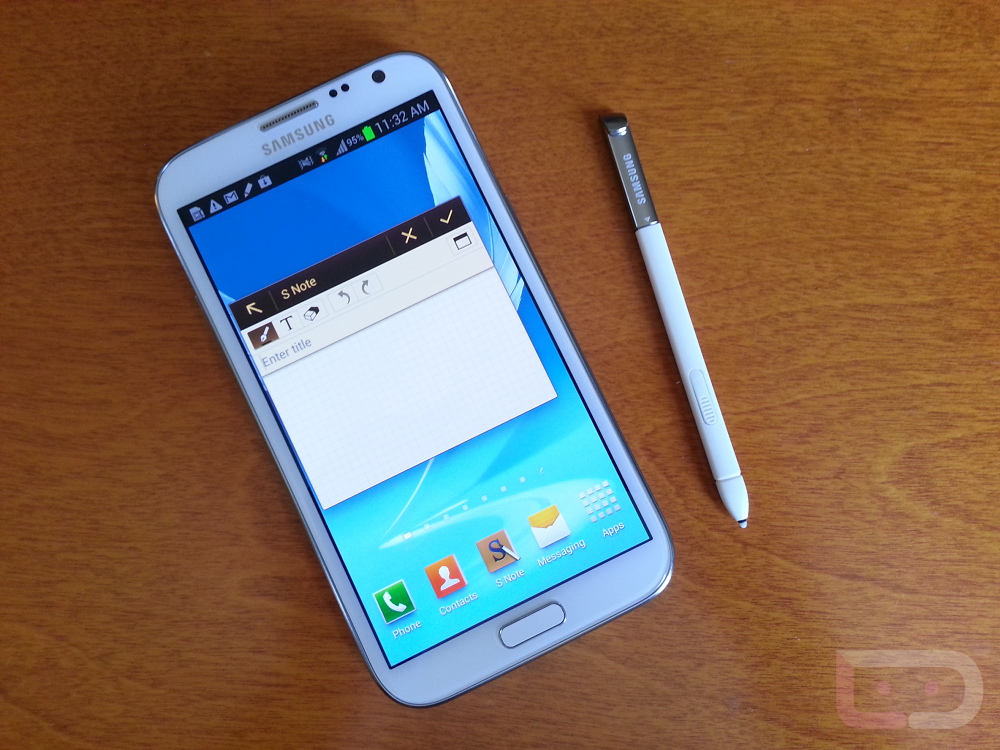Galaxy Note 2 stands as a significant milestone in the evolution of smartphones, blending cutting-edge technology with user-friendly features. This device, with its impressive specifications and innovative design, captivated users and set a precedent for future smartphones. As we dive into its standout features, user experience, and lasting legacy, the Galaxy Note 2 reveals itself as more than just a phone—it’s a game-changer in the mobile world.
From its vibrant display and multitasking capabilities to the unique S Pen that enhances productivity, the Galaxy Note 2 distinguished itself among its peers. Let’s explore how it redefined user interaction and contributed to the rise of phablets, impacting the smartphone market for years to come.
Features of the Galaxy Note 2
The Samsung Galaxy Note 2, released in 2012, marked a significant evolution in the smartphone market, particularly for users who prioritize both productivity and multimedia capabilities. This device combined cutting-edge hardware with unique software features, making it a favorite among tech enthusiasts and general users alike.
One of the standout specifications of the Galaxy Note 2 includes its large 5.5-inch Super AMOLED display, which provides vibrant colors and deep contrasts. This makes it ideal for both reading and viewing high-definition content. Additionally, the device is equipped with a powerful Exynos 4412 quad-core processor, enhancing multitasking capabilities and ensuring smooth operation of demanding applications. Samsung’s S Pen stylus further distinguishes the Note series, offering precision and functionality for note-taking and graphic design, which sets it apart from competitors in the smartphone market.
Display Technology Comparison
The display technology utilized in the Galaxy Note 2 is Super AMOLED, which is known for its vibrant colors and contrast ratios. This technology allows for deeper blacks and more vivid colors compared to other display types. The following points highlight how the Galaxy Note 2’s display technology compares with its competitors:
– Super AMOLED vs. LCD: Unlike traditional LCD screens, the Super AMOLED display integrates the touch sensor directly into the screen, resulting in thinner panels and improved responsiveness. This offers a seamless touch experience.
– Color Accuracy: The color accuracy of the Super AMOLED displays tends to be superior, showcasing a wider range of colors. This makes it particularly appealing for media consumption, where visual appeal is critical.
– Viewing Angles: Super AMOLED displays typically provide better viewing angles compared to standard LCDs. This means that images and videos maintain quality from various angles, an essential feature for sharing content with others.
– Power Efficiency: The self-illuminating nature of AMOLED technology contributes to better power efficiency. When displaying black pixels, the screen consumes less power, extending battery life during regular use.
In summary, the Galaxy Note 2’s display technology not only enhances the user experience but also establishes it as a front-runner against other smartphones in its class. This combination of features and specifications has made the Galaxy Note 2 a memorable device in the evolution of smartphones.
User Experience and Interface

The Galaxy Note 2 is designed with an emphasis on enhancing user experience through its intuitive interface and powerful features. With its large display and customizability, the device provides a platform that caters to both casual users and professionals alike. The combination of hardware and software optimizations ensures that navigating through apps and tasks is seamless and efficient.
User Interface Design
The user interface of the Galaxy Note 2 is characterized by a clean and user-friendly layout, making it easy for users to navigate through different applications and settings. TouchWiz, Samsung’s proprietary interface, enhances the overall experience with its vibrant icons and customizable home screens. Users can personalize their device by rearranging apps, adding widgets, and selecting themes that reflect their style.
In addition to aesthetic qualities, the interface is designed for functionality. Quick settings allow users to access essential features without diving deep into menus, thus streamlining the experience. The device also supports gestures, enabling users to perform actions with simple swipes or taps, enhancing usability further.
Multi-Window Feature
The Galaxy Note 2 introduces a groundbreaking multi-window feature that significantly boosts productivity. This feature allows users to simultaneously run two applications side by side, making it easier to multitask without switching back and forth between apps.
The practicality of this feature is evident in various scenarios. For instance, users can browse the internet while taking notes, or watch a video while responding to emails. The multi-window function is not just a novelty; it reflects a growing trend towards maximizing efficiency in a mobile environment.
- Split Screen: Users can easily resize windows to prioritize one app over another, offering flexibility in multitasking.
- Drag and Drop: Content can be transferred between apps with ease, enhancing workflow and reducing the time spent on repetitive tasks.
- App Compatibility: A wide range of applications support this feature, ensuring that users can leverage multitasking across their favorite tools.
S Pen Functionality
The S Pen is a defining feature of the Galaxy Note 2, providing users with a unique input method that enhances creativity and productivity. With its pressure sensitivity and precision, the S Pen allows for detailed note-taking, sketching, and document annotation.
One of the standout features of the S Pen is its ability to transform handwritten notes into digital text, which is particularly valuable for those who prefer jotting down ideas quickly. This functionality helps bridge the gap between traditional note-taking methods and modern technology.
Moreover, the S Pen opens up a variety of applications for users. For instance, users can create quick memos on the go, annotate screenshots, or use Air View to preview content without fully opening applications. The integration of the S Pen into the user interface not only enhances the overall experience but also allows professionals to optimize their workflow.
“The S Pen transforms the Galaxy Note 2 into a versatile tool for both work and creativity, making it an indispensable companion for users on the go.”
Performance and Battery Life: Galaxy Note 2

The Samsung Galaxy Note 2 was designed to deliver a powerful performance combined with exceptional battery life, making it an ideal device for multitasking and productivity. When it launched, it was praised for its ability to handle demanding applications while maintaining efficiency, setting a new standard for smartphones at the time.
The performance of the Galaxy Note 2 can be attributed to its potent hardware specifications, including a 1.6 GHz quad-core processor and 2 GB of RAM. This configuration enables the device to perform well across various usage scenarios, from high-resolution gaming to intensive multitasking. Users can expect seamless operation when running multiple applications simultaneously, thanks to the device’s robust processing capabilities and ample memory.
Battery Life Comparison
The Galaxy Note 2 is equipped with a 3100 mAh battery, which is larger than many of its contemporaries. This significant battery capacity contributes to its impressive longevity. In real-world usage, the Galaxy Note 2 can last up to 24 hours on a single charge with moderate usage, which includes web browsing, social media, and occasional gaming.
When compared to other devices available during its release, such as the iPhone 5 and HTC One X, the Galaxy Note 2 outperformed them in terms of battery life. The iPhone 5, with its smaller 1440 mAh battery, often required a mid-day charge under similar usage conditions, while the HTC One X struggled to last a full day for heavy users. The superior battery performance of the Galaxy Note 2 can be attributed to both its efficient hardware and power management software.
Performance Optimization Techniques
To ensure optimal performance and battery longevity, users of the Galaxy Note 2 can implement several techniques:
1. Adjusting Screen Brightness: Lowering the screen brightness or enabling adaptive brightness can significantly enhance battery life without sacrificing usability. Users can manually adjust brightness settings in the display settings menu.
2. Managing Background Applications: Closing unused applications running in the background can free up system resources, thereby improving performance and extending battery life. Utilizing the task manager to monitor and end unnecessary tasks is a practical approach.
3. Utilizing Battery Saver Mode: The Galaxy Note 2 features a battery saver mode that limits background data and reduces performance during low battery conditions, helping to prolong battery life when needed.
4. Regular Software Updates: Keeping the device’s software updated ensures that it benefits from the latest performance enhancements and optimizations released by Samsung. Users should periodically check for updates in the settings.
5. Disabling Unused Connectivity Features: Features such as Bluetooth, GPS, and Wi-Fi drain the battery when left on unnecessarily. Users should disable these connections when they are not in use to conserve power.
By applying these optimization techniques, Galaxy Note 2 users can enjoy an enhanced user experience while maximizing both performance and battery life.
Legacy and Impact on the Smartphone Market

The Samsung Galaxy Note 2 not only marked a significant moment in smartphone history but also set a precedent for future devices in the mobile landscape. Its release in 2012 was pivotal in defining the ‘phablet’ category, blending the functionalities of smartphones and tablets into a single device. This innovation echoed throughout the industry, shaping the design philosophy and feature sets of numerous subsequent models.
The Galaxy Note 2’s influence on smartphone design is multi-faceted. It introduced a larger display with a Super AMOLED screen that offered more real estate for users, directly inspiring other manufacturers to adopt larger screens in their devices. The 5.5-inch display became a benchmark, prompting brands such as LG, Sony, and even Apple to explore larger form factors in their flagship products. This trend was not merely about size; rather, it was a movement towards enhanced usability, allowing for more immersive multimedia experiences and improved multitasking capabilities.
Contribution to the Popularity of Phablets, Galaxy note 2
The Galaxy Note 2 played a crucial role in popularizing the phablet segment. Its successful combination of phone and tablet functionalities resonated with users who sought versatility in their devices. The following points illustrate how the Note 2 catalyzed the phablet phenomenon:
- The integration of the S Pen stylus allowed for precise input and unique features such as screen-off memos and handwriting recognition, appealing to a creative audience.
- Its innovative multitasking capabilities, showcased through features like Pop-up Play and Multi-Window, enabled users to run multiple apps simultaneously, enhancing productivity.
- The marketing strategy surrounding the Note 2 emphasized its suitability for both professional and personal use, attracting a diverse user base and increasing its adoption rate.
- Competing brands took notice; within a year, numerous devices mimicking the phablet design emerged, indicating a significant shift in consumer preferences towards larger screens.
The long-term relevance of the Galaxy Note 2 continues to resonate in today’s technology landscape. It established foundational features that have become standard in modern smartphones, such as advanced stylus integration and enhanced multitasking capabilities. The legacy of the Note 2 is seen in the evolution of devices that continue to push the envelope in display technology and user experience. As smartphone manufacturers strive to cater to evolving consumer needs, the impact of the Galaxy Note 2 remains a historic reference point in the ongoing development of mobile technology.
The Galaxy Note 2 not only redefined what users could expect from a smartphone but also laid the groundwork for the devices that followed, ensuring its place in the annals of tech history.
Q&A
What was the main feature of the Galaxy Note 2?
The standout feature of the Galaxy Note 2 was its S Pen, allowing users to write, draw, and navigate with precision.
How did the Galaxy Note 2 perform compared to its competitors?
The Galaxy Note 2 was praised for its excellent battery life, robust processing power, and superior display technology, outshining many competitors at the time.
What impact did the Galaxy Note 2 have on the smartphone market?
The Galaxy Note 2 popularized the phablet category, influencing the design and functionality of future smartphones.
Is the Galaxy Note 2 still relevant today?
While outdated compared to modern standards, the Galaxy Note 2 is remembered for its innovative features and is still appreciated by enthusiasts.
Can I still find apps that support the Galaxy Note 2?
Many apps still support older Android versions, but some modern applications may not be compatible with the Galaxy Note 2.
The Samsung S9 Plus has made a remarkable impact in the smartphone market with its stunning design and advanced camera capabilities. Users appreciate its ability to capture high-quality images, making it a favorite among photography enthusiasts. With its sleek performance and vibrant display, the S9 Plus continues to hold its ground even as new models are released.
For those considering a switch, checking out the current promotion iPhone could lead to some fantastic deals. Apple often introduces enticing offers, making it an opportune time for consumers to upgrade. With various models available, you can find an iPhone that perfectly fits your needs without breaking the bank.